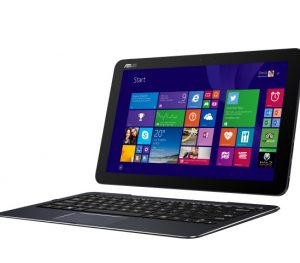 Decisions for IT are no longer made in IT — they’re made in business. So CIOs are feeling the pressure of the boardroom more and more as business leaders look to gain a competitive edge by embracing new technologies. However, does the business truly understand the complications of balancing new trends with less glamorous legacy applications? Joe Lipscombe investigates the balancing act.
Decisions for IT are no longer made in IT — they’re made in business. So CIOs are feeling the pressure of the boardroom more and more as business leaders look to gain a competitive edge by embracing new technologies. However, does the business truly understand the complications of balancing new trends with less glamorous legacy applications? Joe Lipscombe investigates the balancing act.
Responding to customer demand, market trends, recessions and piling competition is the new bread and butter for a good CIO. But not every CIO and IT decision maker has the skills, budget and resources to be able to answer to these calls. When the IT landscape began to make a dramatic shift into a new social era, not so long ago, the rules of the game changed and the traditional IT team was handed a fairly harsh wake-up call.
The new role
Instead of being the chaps who stood in the back and monitored servers and tweaked desktops, the IT team became the forefront of a company’s business plan. Pitching innovative ideas which would provide great strides for the C-level executives. On top of this, they had to shield constant and ever more sophisticated threats from the outer world while opening up their networks to fussy employees who wanted to embrace BYOD, mobility and social platforms. It’s been a rough ride.
The next step, following the inevitable passing of the business torch, is for CIOs to begin attacking these challenges. And one such challenge is incorporating new trends into a web of legacy applications.
“The business pace and rate of change is accelerating,” says Mervyn Kelly, Marketing Director, EMEA, Ciena. “As a result, CIOs face increasing pressure to provide an agile and responsive infrastructure delivering communications, computing and storage. CIOs need to accommodate new business applications, increased workloads, demand for faster performance, and growth not only in the size of data but also from more numerous data sources and destinations. At the same time more industry regulations and laws are driving greater data security and data protection measures,”
e-Hosting Data Fort’s CEO, Yessar Zeineldin, adds: “As CIOs brace for a phase of renewed confidence and an upward trend in business, they are faced with a new challenge — innovation. They are now expected to provide excellent support for the growth and expansion of the business. The buzzword, innovation, is not related to the physical IT infrastructure, but on transforming IT into an integral part of the business and aligning it to the future growth of the organisation.
“The expectation is to provide end-to-end programmes; it’s no longer about just enhancing applications or improving work flow. It is about providing a holistic model that will work to accomplish business objectives and be an integral part of the establishment.”
Disturbing the peace
Many of these new trends are seen as business must-haves, but the challenges surrounding integrating them can be difficult. Experts are suggesting that the major disruptions will be found by implementing social, mobility, analytics, and cloud.
“The SMAC stack (social, mobility, analytics and cloud) is disrupting not only the applications used by businesses, but is also poised to transform the business model itself,” advises A. N. Rao, Senior Vice President, IT Infrastructure Services, Cognizant. .
“By 2015, we will have around 10 billion computing devices in use, generating 1,800 exabytes of data. Big Data or analytics will provide insight and trends from data that’s growing exponentially, which can be leveraged to focus on fewer, more important things. Mobility solutions enable anywhere anytime access to employees, customers and partners. But most legacy applications have to be re-coded or new apps built for multiple mobile platforms. Organisations also have to re-engineer the way software distribution happens for mobile devices,”
Den Sullivan, Head of Architectures and Enterprise, Emerging Markets, Cisco, agrees that the SMAC stack will cause disruptions, but points to video technologies as another communication channel which will grow in need and interest while causing trouble with traditional systems.
“Video is becoming the new voice, and so integrating this with legacy is difficult. But I think all of the highlighted trends — cloud, Big Data, mobility — will give an opportunity for companies to take old legacy applications into cloud. With legacy ERP, for example, there’s an opportunity here to move it into the cloud if you’re embracing a new layer of application. You might have your own in-house built ERP system that is old and costly — this is the chance for a new breed,” he says.
Running through the green fields
It has been claimed that a lack of legacy in the Middle East markets makes this transition a little easier for companies here than in the US or Europe — is there truth in these claims?
“There is strong potential here [to leapfrog technologies] particularly in the SMB segment,” says Sid Deshpande, Senior Analyst, Data Centre Infrastructure and Management, Gartner.
“However, legacy is only one part of the equation. Skill-sets and mind-sets towards innovation are also important and the jury is out on whether organisations in the Middle East will indeed embrace these technologies. So far we have seen a heavy focus on legacy infrastructure from large enterprises. This may change depending on how providers position and market these emerging technologies, as MEA has a very provider-driven purchasing profile.”
Sullivan of Cisco echoes this sentiment, but again points to video and communications in an attempt to further drive the point home.
“Clearly the challenges of large enterprises over in the US and Europe that obviously have been able to not only afford the technology but to introduce the capability is quickly embracing new ones,” he says.
“Service providers here are rolling out technologies quicker into market and at less of the cost because they’re not backing onto legacy systems. That goes across service providers, collaborations, network, and integrations. Don’t forget, there’s a lot of copper still in the ground in other regions, whereas here, for service providers to provide bandwidth for video streaming they can use fibre, and avoid copper. Also, you’ve got wireless. People are not doing the traditional fixed line, they’re going for wireless. It’s quicker and easier to deploy. Then at the application level, they haven’t got the entrenched load of data in certain databases which need to be retranslated. Starting over from scratch is a competitive advantage for sure.”
In cases such as these, it’s important for vendors to collaborate with customers to ensure that the education levels of the region are high enough for the right decisions to be made.
Vendor assistance
Kelly of Ciena explains that in some situations, replacing legacy systems isn’t the best way to embrace new technologies.
“Vendors can help CIOs by better understanding how the legacy versus new trade-off fits with their business and technology priorities. For example, if the focus is on delivering improved operational results, the trade-off may favour making the investment to replace a legacy system with new technology. If the business priority is reducing costs, perhaps the best action is to leave the legacy system in place for the time being.”
Rao, Cognizant, adds: “Service providers need to work as trusted partners, work with the CIOs to understand the overall business objectives, and then decide on fit-for-business solutions. While it is easy to jump on the bandwagon, it is extremely important to look at the overall organisational objectives, long-term strategy, and business case before adopting new technologies. CIOs and IT teams should engage service providers in defining or reviewing the IT roadmap in a strategic and holistic manner. Service providers should bring to bear their expertise and experience of working with many customers around the world in similar industries.”
In the Middle East, vendors and end users must collaborate in order to maintain the strong regional growth which has quickly placed it as one of the must-have markets for all global players, as well as creating opportunities for local start-ups and regional experts that have fared so well over the past decade.











